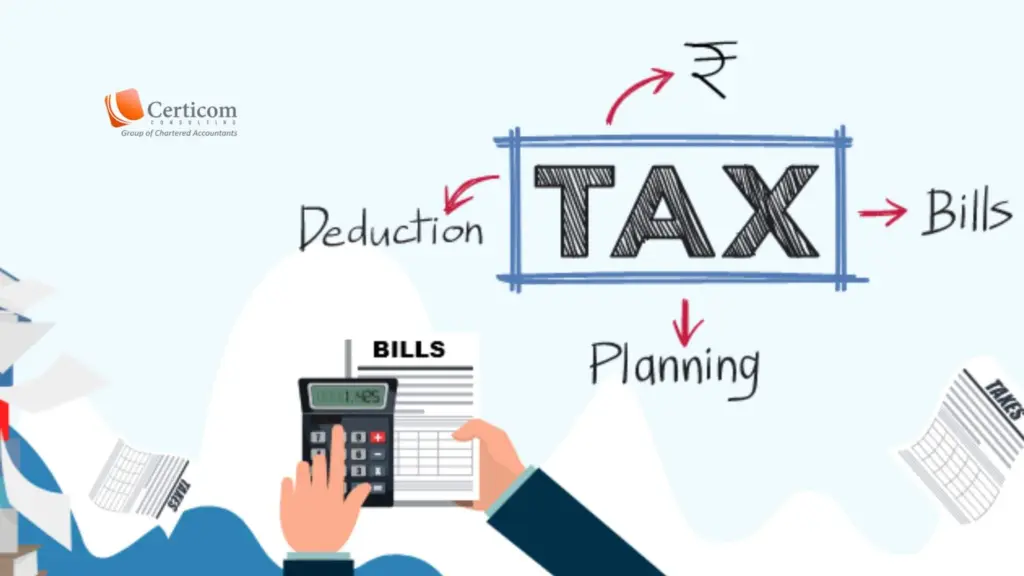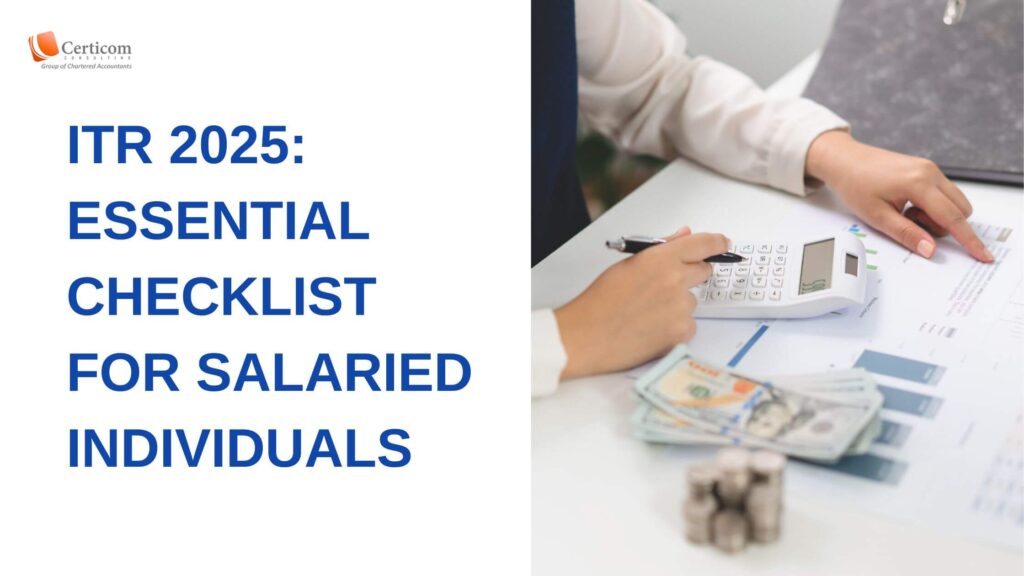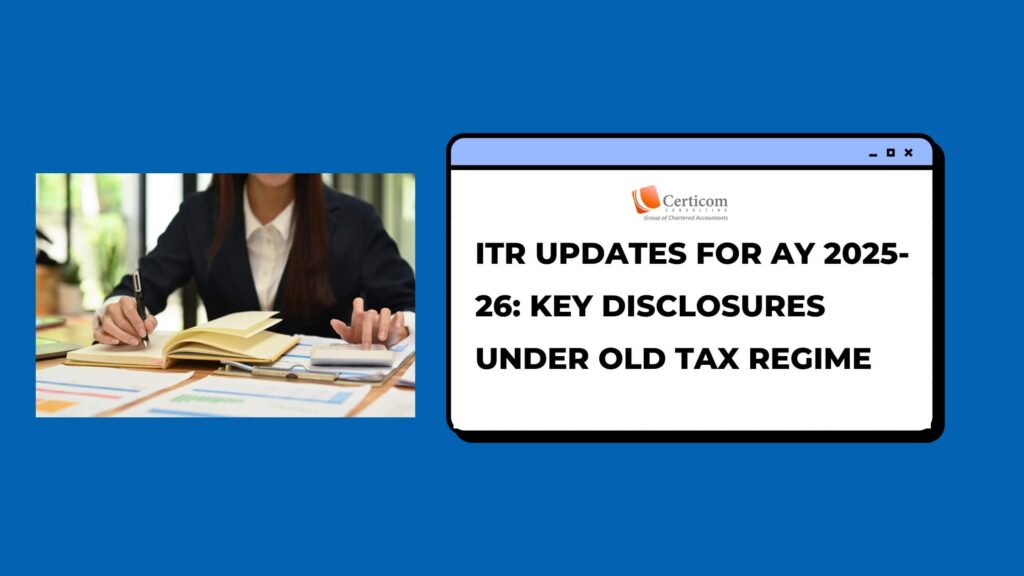HOW TO FILE ITR-1 FOR SALARIED INDIVIDUALS

Filing income tax returns (ITR) is an essential responsibility for salaried individuals in India. The ITR-1 form is specifically designed for individuals with income from salary, pension, or interest. This article aims to provide a step-by-step guide to help salaried individuals file their ITR-1 accurately and efficiently.
Here is a step-by-step guide to help you file ITR-1
Step 1: Determine Your Eligibility:

Ensure that you meet the eligibility criteria for filing ITR-1. This form is applicable to individuals with the following income sources:
- Income from Salary/Pension
- Income from One House Property (excluding cases where loss is brought forward from previous years)
- Income from Other Sources (excluding lottery winnings and income from racehorses)
Step 2: Gather the Required Documents:
Collect the necessary documents and information to file your ITR-1, including:
- PAN (Permanent Account Number)
- Aadhaar Card
- Bank Statements
- Form 16 (provided by your employer)
- Details of investments and expenses eligible for deductions (such as Section 80C investments, medical
insurance premium, etc.)
Step 3: Register on the Income Tax e-Filing Portal:
Visit the official Income Tax e-Filing portal ( https://www.incometax.gov.in/iec/foportal/) and register if you haven’t done so already. Provide your PAN, name, date of birth, and other required details to create an account.
Step 4: Fill in the ITR-1 Form:
Fill in the required details accurately. Enter your personal information, income details, deductions, exemptions, and tax computation as applicable. Ensure that you provide accurate information and double-check for any errors.
Step 5: Validate the Form:
Once you have filled in all the details, validate the form to ensure it meets the required format and contains all the necessary information. The validation process will highlight any errors or missing entries that need to be corrected.

Step 6: Verify and Submit:
After Validation choose one of the available methods for verification, such as Aadhaar OTP, net banking, or sending a signed physical copy (ITR-V) to the Centralized Processing Center (CPC) within 30 days. Follow the specific instructions for the chosen verification method.
Step 7: Confirmation and Acknowledgement:
Once the verification process is complete, you will receive an acknowledgment on the e-Filing portal. The acknowledgment serves as proof of filing your ITR-1. Save it for future reference.
That’s it! You have successfully filed your ITR-1 online. Remember to keep a copy of the filed ITR and other relevant documents for your records.
Related Post
Tax Guide for Freelancers and Influencers: Navigating Income, Deductions, and Compliance
ITR Updates for AY 2025-26: Key Disclosures Under Old Tax Regime
Book A One To One Consultation Now For FREE
How can we help? *




